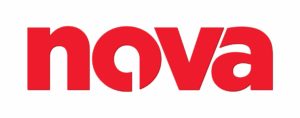In an age where digital engagement is pivotal for businesses, innovative strategies for capturing and nurturing leads have become essential. One such strategy that has gained significant traction is the use of photo booths at events, trade shows, and retail environments. Far from being mere entertainment, photo booths have evolved into powerful tools for lead generation, brand engagement, and data collection. This article explores various use cases and case studies that demonstrate how companies are leveraging photo booths to generate leads effectively.
1. Engaging Event Attendees
Use Case: Events and trade shows are fertile grounds for lead generation. However, capturing the attention of attendees in a crowded space can be challenging. Photo booths offer an interactive and enjoyable experience that naturally attracts foot traffic, creating an opportunity for businesses to engage with potential customers.
Case Study: Sephora’s Beauty Studio at Trade Shows
Sephora, the global beauty retailer presented a photo booth at a beauty trade show to drive engagement and collect leads. The booth allowed attendees to try on virtual makeup, take photos, and share them on social media. Before participating, users were required to enter their email addresses, which Sephora used to follow up with personalised beauty recommendations and promotional offers. The result was a substantial increase in their email list and a high level of engagement on social media, translating into increased brand visibility and customer acquisition.
2. Social Media Amplification
Use Case: In today’s digital landscape, social media presence is crucial. Photo booths that enable instant sharing of branded photos on social media platforms can significantly boost a company’s online visibility. This not only promotes brand awareness but also turns participants into brand ambassadors.
Case Study: Coca-Cola’s Share a Coke Campaign
Coca-Cola integrated photo booths into their “Share a Coke” campaign, where consumers could personalise a Coke bottle with their name and take a picture with it. The photo booth was set up in various high-traffic locations, and users could instantly share their photos on social media with a dedicated hashtag. The campaign generated millions of social media impressions and contributed to a noticeable spike in Coca-Cola’s sales during the campaign period. The social media shares also allowed Coca-Cola to collect valuable data on customer preferences and behaviors .
3. Data Collection and Analytics
Use Case: Photo booths can be equipped with software that collects demographic data, measures engagement, and tracks user behavior. This data is invaluable for businesses looking to understand their audience better and refine their marketing strategies.
Case Study: Nissan’s Auto Shows Photo Booths
Nissan implemented interactive photo booths at several auto shows to enhance visitor engagement. The booths offered augmented reality experiences, allowing users to visualise themselves with Nissan vehicles. To access the photos, users provided their contact information, including preferences regarding vehicle types and features. Nissan used this data to send targeted follow-up emails and promotions based on the users’ expressed interests. The initiative not only generated leads but also provided Nissan with deeper insights into consumer preferences, which informed their subsequent marketing efforts .
4. Enhancing In-Store Experience
Use Case: For brick-and-mortar retailers, photo booths can enhance the in-store experience by creating memorable interactions that encourage customer loyalty. They also offer a way to gather customer information in a non-intrusive manner.
Case Study: Urban Outfitters’ In-Store Photo Booth Campaign
Urban Outfitters, a popular clothing retailer, installed photo booths in select stores to create a fun and interactive shopping experience. Customers could try on outfits, take photos, and share them on social media directly from the booth. To retrieve their photos, customers had to enter their email addresses, which Urban Outfitters used for targeted email marketing campaigns. This initiative not only increased in-store foot traffic but also expanded their email marketing list, resulting in higher customer retention and repeat visits.
5. Promotional Campaigns and Contests
Use Case: Photo booths can be integrated into promotional campaigns and contests, encouraging participation and capturing leads in the process. The gamification element makes the experience enjoyable, increasing the likelihood of participation.
Case Study: Marriott’s Rewards Program Campaign
Marriott International used photo booths during their Marriott Rewards campaign at various hotel locations and events. Guests were invited to take themed photos, which were automatically entered into a contest for a chance to win free stays and other perks. Participants had to sign up for the Marriott Rewards program to enter, effectively converting booth users into program members. The campaign led to a significant increase in Marriott Rewards sign-ups, which in turn helped drive customer loyalty and repeat bookings.
Photo booths have transcended their traditional role as simple entertainment tools. When strategically implemented, they can become potent lead generation devices that offer a blend of engagement, data collection, and social media amplification. The success stories of brands like Sephora, Coca-Cola, Nissan, Urban Outfitters, and Marriott demonstrate the versatility and effectiveness of photo booths in various contexts. As businesses continue to seek innovative ways to connect with their audiences, photo booths are likely to play an increasingly important role in lead generation strategies.























































